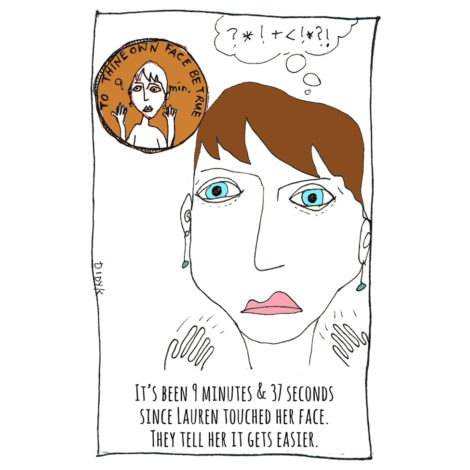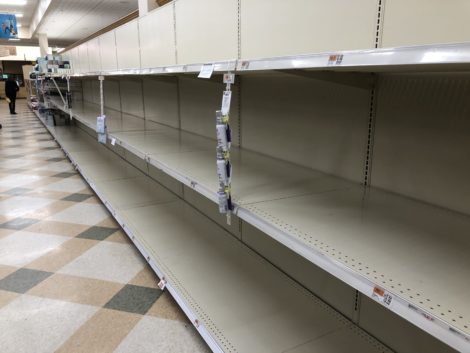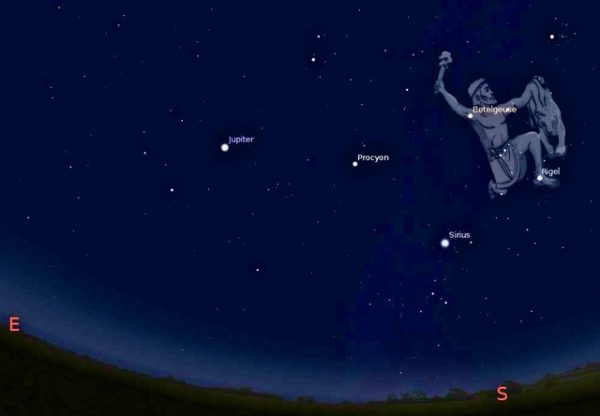
Observe and report the stars you can see in the constellation Orion (or Gemini) between March 16-24. Image courtesy Globe at Night
March 16 – 29, 2020
Mount Washington — Tonight’s waning last quarter (half) moon rises at 2:21 a.m., well positioned for moonlight not to interfere with evening stargazing. From today, March 16, through next Tuesday, March 24, when the moon is dark, known as new moon, there will be only morning crescents during the early hours before sunrise. This period is optimum for stargazing and for contributing in a small but significant way to astronomical research. Astronomers need eyes in the field all over the world to learn about stargazing conditions beyond their observatories. For us, this is an easy and enlightening assignment. It can be fun to share with family and friends, too.
During the ten days from March 16-24, we are asked to look at the constellation Orion (or Gemini) and compare what we see to the Globe at Night schematics accessed on your computer or smartphone.
Globe at Night is the international organization that has created a way for individuals to report what stars we see in just one constellation in the cycle or cycles you choose. March seems to be the optimal month in the year for the program at our location.
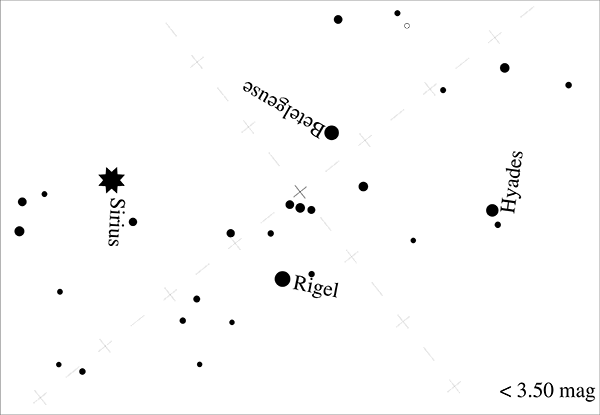
Greatest magnitude stars in and around Orion. All of these stars are visible where there is some light pollution. See eight choices from less to more visible stars at your location at www.globeatnight.org/webapp/. Image courtesy Globe at Night
Go out to spend a few minutes observing during the timeframe between at least one hour after sunset until midnight, when Orion and Gemini are visible in our skies. Allow your eyes to adapt to darkness for at least 10 minutes while preparing to get a count of the stars you can see in Orion. When accessing the report page on the app, it may show Gemini as your choice. In the bottom right corner of the schema you may switch to Orion, which is preferable for the researchers this cycle. Also note, should you need this information, that our latitude is roughly 42 N, longitude 73 W.
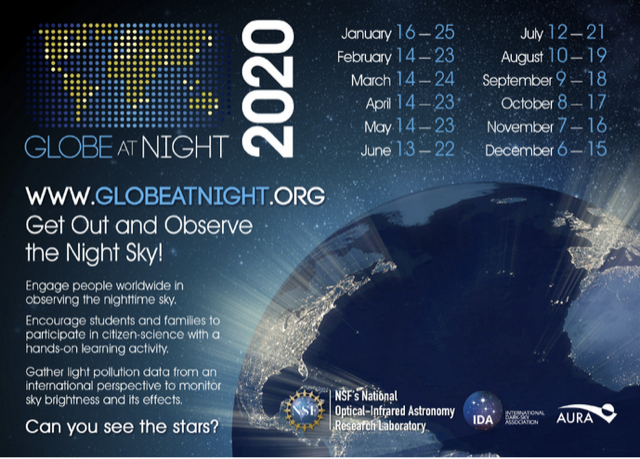
Notice light beams streaming up from population centers on Earth. This light reflects off Earth’s atmosphere, making a blanket of light haze that blocks our view of the stars in the night sky, beyond the light pollution envelop. More light, the thicker the barrier, the less stars we see. Image courtesy Globe at Night
Mostly in the words of GAN: “The Globe at Night program is an international citizen-science campaign to raise public awareness of the impact of light pollution by inviting citizen-scientists to measure their night sky brightness and submit their observations from a computer or smart phone. Light pollution threatens not only our ‘right to starlight,’ but affects energy consumption, wildlife and human health.”
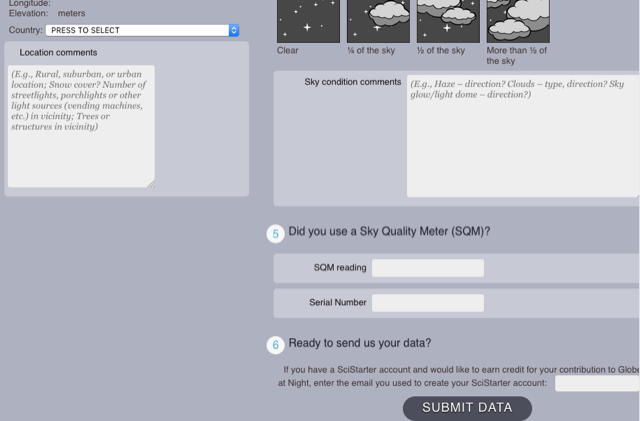
Data entry form on computer or smartphone for www.globeatnight.org/webapp/. Image courtesy Globe at Night
From the International Dark Sky Association: “An important part of solving the problem of light pollution is to have a thorough understanding of its magnitude. A great way to do that is to measure the brightness of the night sky. Thankfully, it is relatively easy to make such measurements – and you can help!”
The following videos, run time about 4 minutes and 2 minutes, respectively, are well worth viewing.
Runtime: 4 minutes, 4 seconds. An astronomer’s appeal and voices from around the world.
Runtime: 2 minutes, 21 seconds. How you can make a difference by participating in Globe at Night.
Resources
International Dark Sky Association https://www.darksky.org/ and video https://www.darksky.org/2018-globe-at-night/
more videos https://www.youtube.com/channel/UCL4PdCeWtgfx942xXskJ4Qg
https://www.globeatnight.org/about.php
Latitude, sunrise and sunset data
https://www.sunrisesunset.com/search/results.asp?s=01230&scountry=us&back=USA
https://www.darksky.org/light-pollution-research-shows-humans-and-wildlife-can-coexist/
https://www.darksky.org/ama-report-affirms-human-health-impacts-from-leds/
https://www.darksky.org/the-human-environment-includes-orbital-space/
Opportunity to participate
April 4, 2020 Northeast Astronomy Forum http://www.rocklandastronomy.com/neaf.html
OFFICIAL STATEMENT: “Due to the Coronavirus COVID-19 pandemic, Rockland Community College, the location of the annual Northeast Astronomy Forum (NEAF), announced restrictions limiting public campus gatherings. Because of this development, NEAF 2020 will be held virtually online instead of at RCC, where it has been held for 29 years. NEAF The Virtual Experience will be held one day only on April 4th. Attendees of this historic virtual online event will experience product demonstrations, door prizes, and amazing speakers that have made NEAF legendary. Additionally, the Rockland Astronomy Club will reschedule NEAF at RCC later this year and NEAIC at the Crowne Plaza in conjunction with NEAF.” –The RAC Team
Error: Contact form not found.
